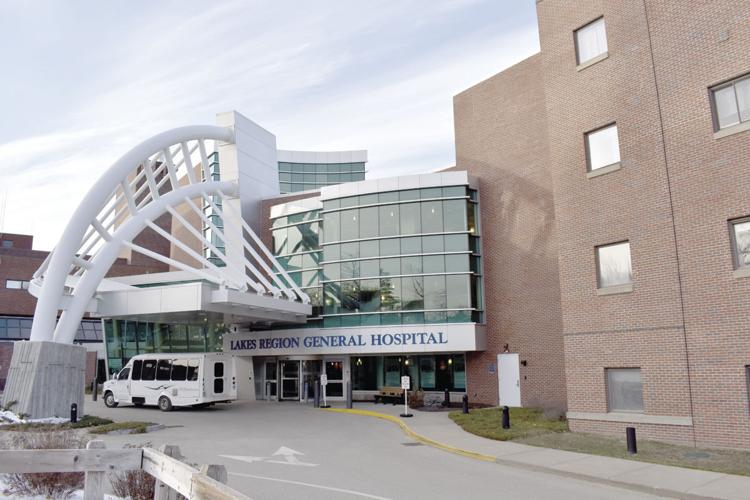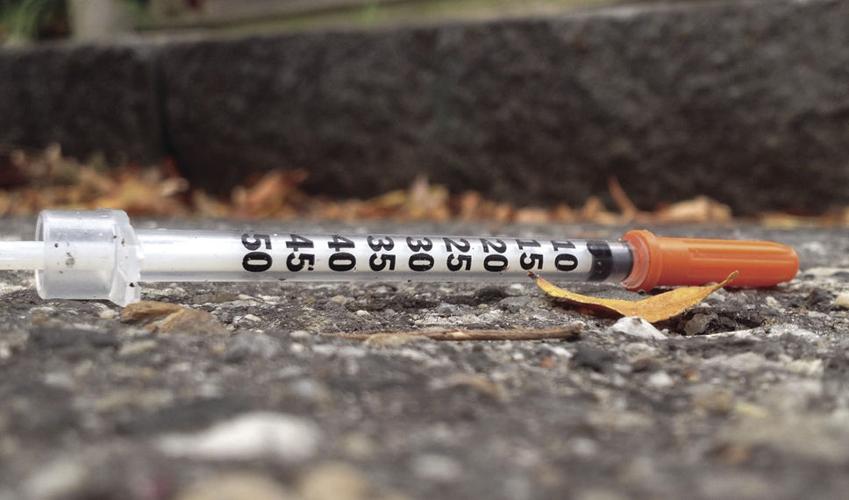LACONIA — Two urgent-care centers are treating patients across the street from each other in Belmont and a third is 6 miles down the road in Tilton.
The proliferation of these walk-in care facilities, two of which were built over the summer, is one way local healthcare has changed over the last decade. Other changes include an end to the longstanding labor and delivery service at Lakes Region General Hospital, increased financial pressure on the hospital and an effort to merge it with another health system.
LRGHealthcare is the region’s biggest employer and provides some of the area’s best paying jobs, but it also faces major financial pressure caused by a heavy debt load and changes in the way payments are received for medical services.
Payment changes
Kevin W. Donovan, president and chief executive officer of LRGHealthcare, said that the last decade has marked a big change.
“From 2009 to 2019, we saw dramatic shifts in our mix of payers,” he said in an email. “Where we once provided 40 percent of services to commercially insured patients in 2009, only 29 percent of services today are provided to those individuals.
“Over that same time period, we’ve seen an increase in services to patients enrolled in government programs (Medicare and Medicaid). Medicare grew from 44 percent to 53 percent of services provided over that 10 year span and Medicaid grew from 10 percent to 12.5 percent over the same time.”
This is important because government payments are typically less than the actual cost of the service provided. Medicare pays about 90 percent of actual cost and Medicaid pays 40 percent of actual cost.
“It is important to note, however, that the expansion of Medicaid in New Hampshire has actually been positive,” Donovan said. “While we only receive 40 percent of actual cost from Medicaid, those individuals would likely have no ability to pay for services had the state not expanded the program.”
Financial risk
He also said that over the last 10 years government providers have instituted programs intended to incentivize high-quality, low-cost care, but these programs come with the potential for financial risks and penalties. Commercial insurance companies are following the lead of the government and implementing similar models.
Also, there has been a large increase in the number of patients with high-deductible plans or large co-pays.
“In theory, the commercial insurance company thought is that a patient with more financial risk leads them to make better choices,” Donovan said. “Unfortunately, this often leaves the patient in a situation where they seek a necessary service, and are subsequently left with a large bill previously paid by the insurance company or employer. This has led to increased bad-debt and uncollectible accounts for organizations like LRGHealthcare.”
Under financial pressure, LRGH officials made the decision to stop delivering babies, a service that was less in demand given the graying of Belknap County’s population, which has a median age for females of 47.4 years.
Birthing center
Labor and delivery services ended on May 30, 2018, at LRGH, although its providers continue to offer prenatal and postpartum care. Deliveries generally take place at Concord Hospital.
Donovan said at the time that it was an extremely difficult decision to end a service that “is one of the most rewarding things we do as a healthcare organization.”
“However, to ensure the quality of care for our patients and address financial concerns associated with those services, it was a decision that we felt was right and ultimately inevitable.”
He said deliveries had decreased from 346 in 2015 to 283 in 2017.
Last May, Donovan announced an end to walk-in medical care at the Laconia Clinic, 724 North Main St.
He said regulatory changes and revised air handling standards drove the decision to close that walk-in care service.
Urgent care centers
Meanwhile, ClearChoiceMD and LRGH collaborate in an urgent care clinic at a clinic at 96 Daniel Webster Highway at the Belknap Mall in Belmont. It is open daily from 8 a.m. to 8 p.m.
The two organizations also partnered in another one that was built over the summer at 75 Laconia Road, near BJ's Wholesale Club in Tilton. That construction project took place at the same time as another that built a ConvenientMD Urgent Care clinic at 73 Daniel Webster Highway, across the road from the Belknap Mall.
Max Puyanic, chief executive officer and co-founder of Convenient MD Urgent Care, said the site selection was based on anticipated need for medical services in the general area.
"Half the patients will have more than a 30-minute drive time," he said. "The site selection didn't have anything to do with ClearChoiceMD."
Access to local care
Donovan said his organization's goal is to make sure people have good access to their doctors.
“What we really know is that people want to see their primary care providers whenever possible, so we are working hard to improve that access," he said. "We have hired a few new providers, increased our efforts to expand same-day access in our primary-care practices and implemented a central referral line for patients looking for a PCP."
In November, the hospital announced completion of the first and largest phase of a $7.5 million emergency department renovation funded by private donations.
The improvements come even as LRGH works on efforts to merge with a large health care system as a way to remedy its financial concerns.
No announcement has been made on who that partner will be, but Donovan said hospital officials were deep into discussions toward a merger.
Drug trends
The widespread use of heroin and fentanyl – the latter a devastatingly powerful and highly addictive synthetic opioid – has changed the landscape of health care over the last 10 years.
As of Dec. 5, there were 284 confirmed drug deaths in the state — the vast majority caused by opioids — and another 80 deaths still under toxicological investigation, according to the New Hampshire Medical Examiner’s office.
Drug deaths reached a peak of 490 in 2017, compared to 201 in 2011.
Laconia Police Chief Matt Canfield, in a report to the Police Commission, said overdose reports in the city this year are running about half of last year’s level.
He said cost factors and fears of fentanyl-laced heroin have led to increased use of methamphetamine, which is physically debilitating but less likely to lead to a fatal overdose.
‘The Doorway’
This year, LRGH opened “The Doorway,” one of nine access points statewide for people with opioid addiction issues to access substance use services. The idea was to make access to services easier and to break down barriers that often stop people from utilizing community services.
Maggie Pritchard, chief executive officer for Lakes Region Mental Health Center, said a positive development over the last decade was expanded Medicaid, which provided health care benefits for treatment of substance use disorder.
“Ten years ago, there was no way Medicaid would pay for that,” she said. “We were discouraged from writing about substance use in the records of mental health patients.
“We’ve come a huge way on treatment for substance abuse through peer support, the AA model and beyond. This is how people get better.”
One result of the opioid epidemic was the creation of Navigating Recovery in 2016. The nonprofit center is among those offering recovery coaching and workshops for those struggling with substance misuse. Recovery coaches develop connections with clients and help them to set manageable goals to further their recovery process.
Mental health treatment
Pritchard said another positive development over the past decade has been attempts to reduce the stigma associated with mental illness.
She praised LRGH for its recognition that there was a need to better accommodate patients with mental health issues.
The hospital opened an annex in the emergency room area to provide privacy, space and treatment for these patients. There is a lack of space in the state’s in-patient mental health facilities, so some patients could be required to wait days for placement.
On Thursday afternoon, there were nine adults and four children statewide waiting for an in-patient mental health bed, Pritchard said.
The annex allows such patients to start on a treatment plan while they are awaiting placement. In some cases, the treatment could even allow them to avoid having to go to an in-patient center.
Donovan, the LRGH chief executive officer, has said the annex has become a model for other hospitals.
“Some of our peers in New Hampshire have come to visit us to understand what we’ve done to be a model of success so they can mirror that in their communities.”



















(0) comments
Welcome to the discussion.
Log In
Keep it Clean. Please avoid obscene, vulgar, lewd, racist or sexually-oriented language.
PLEASE TURN OFF YOUR CAPS LOCK.
Don't Threaten. Threats of harming another person will not be tolerated.
Be Truthful. Don't knowingly lie about anyone or anything.
Be Nice. No racism, sexism or any sort of -ism that is degrading to another person.
Be Proactive. Use the 'Report' link on each comment to let us know of abusive posts.
Share with Us. We'd love to hear eyewitness accounts, the history behind an article.